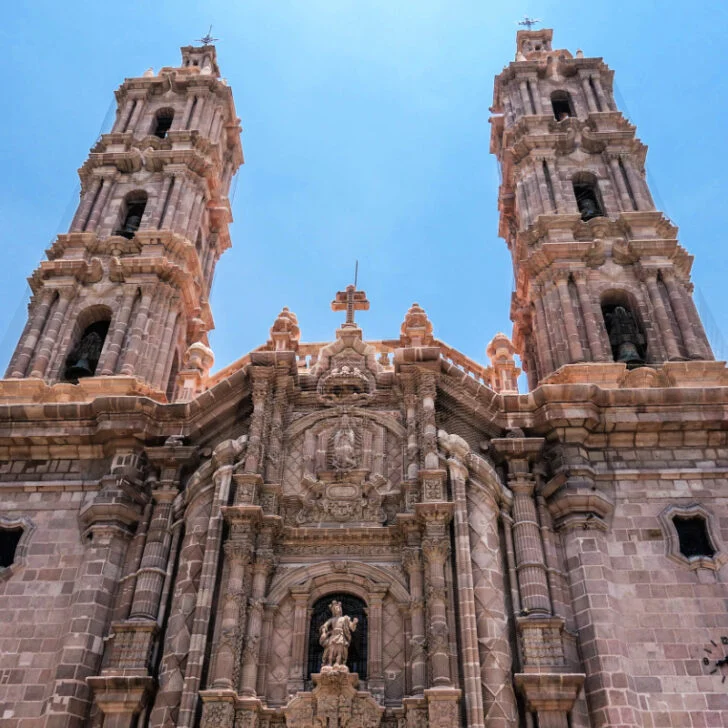Mexico has always been the number one destination among Americans, owing to its unique tropical nature and warm atmosphere, but it’s been reaching a new popularity apex as demand for cultural immersions grows.
Now more than ever, those who are going abroad want to make up for lost time after spending years locked up at home, and they want more than just relaxing by the beach.
Needless to say, several historically significant cities in Mexico are now becoming trendier to visit.
That is the case with San Luis Potosí, a small state capital and currently one of the fastest-growing tourist hotspots South of the border:
Why San Luis Potosi Should Be On Your Bucket List
San Luis Potosi City, or how it is more commonly called, SLP or San Luis, serves as both the capital and economic heart of the namesake state, with a population of over 800,000 residents, making it one of the largest in all of Mexico.
Named after Louis XI of France, who was also chosen as the city’s patron saint, it is one of the most traditional colonial-era cities in the country, developing as a settlement near a mining area that would prove vital to the enrichment of the Transatlantic Spanish Empire.

During its Golden Age, SLP was one of Transatlantic Spain’s unofficial capitals for mining, a status it held proudly since its strategic founding in 1592.
As a center for not only mining but also commerce and trade, it flourished as one of the wealthiest cities in Spain’s American territories, and its numerous colonial treasures that have stood the test of time are everlasting proof of that.
A Well-Preserved Colonial Town

As it was five hundred years ago, the Downtown Area is still San Luis’ central aorta, from which all its smaller veins flow out. It is the site of the Plaza de Armas, which similarly to other colonial gems of Mexico, is flanked by an 18th-century Governor’s Palace and a Spanish Cathedral.
Nearby, the Temple of Our Lady of Carmen is not to be missed, either, as it features a vibrant-colored, tile-adorned dome and richly decorated altars. Back then, it was a manmade wonder of Colonial Mexico, and it’s still one of the modern Federation’s most impressive to this day.
The Spaniards were famous for their bullfighting, and the tradition was imported from the Iberian Peninsula, their homeland, to the lands they conquered in the Western Hemisphere. In San Luis, this meant the construction of the Plaza de Toros Fermin Rivera.

The most exciting thing about the city, however, is the fact that it’s never stopped evolving and adapting to the changing times.
What To See Beyond The Old Town
The 20th century saw the development of a booming manufacturing industry and a series of more modern, skyscraper-dotted districts, without compromising the historic townscape of the Centro Historico, added to UNESCO’s World Heritage Site list.
More recently, as tourism increased, fuelled by growing demand for culture-filled getaways among U.S. arrivals, easily the largest category of tourists in SLP, the city invested more heavily in promoting its historical past.

Numerous landmarks have opened, and historical buildings have been revitalized in recent decades. These have included the Laberinto Museum of Science and Arts, modeled after the landmark Papalote Museum of Children in Mexico City, and the Muniz Werger Building, rising 80 meters above ground.
Opened in 1993, it is an iconic of the Potosino skyline, commanding a breathtaking panorama of the surrounding skyscrapers and the more quaint Old Town in the center.
In a way, no visit to Central Mexico could ever be complete without a stopover, as brief as it might be, in SLP, as it forms the economic powerhouse ‘quartet’ of the region, alongside Mexico City, Guadalajara, and Monterrey, three other equally-important historical cities.

Tourism In SLP Is Growing
During the first two years of governance of the incumbent Governor, more than four million visitors have been recorded in SLP and the wider state, a 22.1 percent increase over previous administrations, making it a rapidly-rising destination domestically.
As Governor Ricardo Gallardo Cardona asserted himself, the goal is to ‘disseminate’ the natural, historical, and cultural attractions that San Luis has to offer, as it has never been done before.
This year, hotel occupancy sits at an average of 49.5 percent, as attested by the head of Mexico’s leading tourism authority Sectur, Juan Carlos Machinena, on a par with other Mexican cities with a similar tourist offer.

The Tourism Ministry itself seems invested in promoting SLP on a global stage, having recently awarded the ‘Magical Neighborhood’ distinction to Tlaxcala, one of the city’s most picturesque, while adding Ciudad del Maíz and Tierra Nova, within state boundaries, to their list of ‘Magical Towns’.
Luckily for Americans, SLP has its own international airport, hosting nonstop flights from Houston.
It also has some of the lowest hotel fares in all of Mexico, with four-star listings available on Booking.com for as cheap as $53 per night this fall. Additionally, consumer prices can be lower than in other parts of the country, all the more incentive to add it to your list.
Credit: Source link

